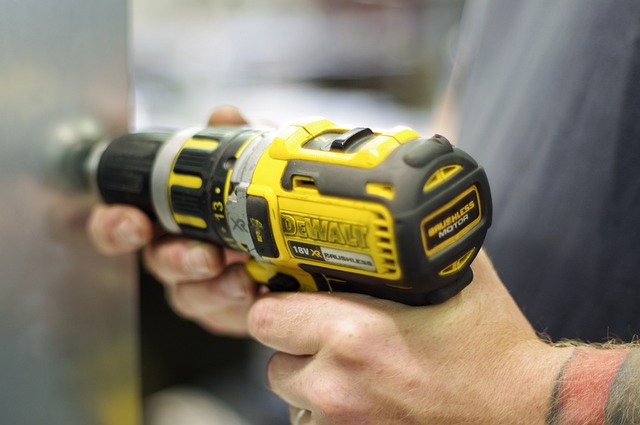Used Patio Doors: What to Consider, Inspect, Install, and Restore
Patio doors can transform your living space, connecting indoor areas with outdoor environments seamlessly. When considering used patio doors, you can save money and potentially find unique styles that are no longer in production. However, this choice comes with its own set of considerations and challenges. This article will guide you through the process of buying, inspecting, installing, and restoring used patio doors, ensuring you make an informed decision and get the most out of your purchase.

What should you consider before buying used patio doors?
Before diving into the world of used patio doors, there are several factors to keep in mind. First, consider the style and material that will best complement your home’s architecture and interior design. Common materials include wood, vinyl, aluminum, and fiberglass, each with its own advantages and drawbacks. Wood offers a classic look but requires more maintenance, while vinyl is low-maintenance but may not provide the same aesthetic appeal.
Next, think about the size and configuration of the door opening. Measure the existing space carefully, accounting for any potential modifications needed to fit the used doors. Consider whether you want sliding doors, French doors, or folding doors, as each type has different space requirements and functionality.
Energy efficiency is another crucial factor. Look for doors with double or triple-pane glass and low-E coatings to help maintain your home’s temperature and reduce energy costs. Finally, consider the overall condition of the doors and factor in any restoration or repair costs when evaluating the total price.
How do you inspect used patio doors for hidden problems?
Thorough inspection is key when purchasing used patio doors. Start by examining the frame for any signs of rot, warping, or damage. Pay close attention to the corners and joints, as these areas are prone to water infiltration and decay. For wooden doors, use a screwdriver to gently probe suspicious areas, checking for softness that could indicate rot.
Inspect the glass panels for cracks, chips, or signs of seal failure. Foggy or milky appearance between panes often indicates a broken seal, which can compromise insulation. Check the weatherstripping and ensure it’s intact and pliable, as this is crucial for energy efficiency and preventing drafts.
Test the door’s operation by opening and closing it several times. Listen for any unusual noises and feel for resistance or sticking points. Examine the rollers, tracks, and hinges for wear or damage. For sliding doors, ensure the rollers move smoothly and the track is free from debris or corrosion.
Lastly, inspect the locking mechanism thoroughly. Ensure all components are present and functioning correctly, as replacing a complex locking system can be costly and may impact the door’s security.
What tools and skills are needed for installing used patio doors?
Installing used patio doors requires a combination of carpentry skills and the right tools. Essential tools include a level, tape measure, drill, screwdriver, pry bar, caulking gun, and shims. Depending on the installation, you may also need a reciprocating saw, circular saw, or jigsaw for making adjustments to the opening.
Skills required include the ability to accurately measure and level the door frame, properly apply weatherproofing materials, and securely fasten the door in place. You’ll need to understand basic framing principles to ensure the door is plumb, level, and square within the opening.
For sliding doors, you’ll need to be comfortable working with rollers and tracks, ensuring smooth operation. French doors require precise hinge installation and alignment. In both cases, proper flashing and weatherproofing are crucial to prevent water infiltration.
If you’re not confident in your skills, it’s wise to consult or hire a professional. Improper installation can lead to energy inefficiency, security risks, and potential water damage to your home.
How can you restore and adapt used patio doors for modern homes?
Restoring used patio doors can breathe new life into your home while maintaining a connection to its history. Start by thoroughly cleaning the doors and assessing their condition. For wooden doors, sand down any rough areas, fill cracks or holes with wood filler, and apply a fresh coat of paint or stain to protect the wood and update its appearance.
To improve energy efficiency, consider adding weatherstripping or replacing old, ineffective seals. You can also upgrade the glass to double or triple-pane units with low-E coatings, significantly improving insulation. However, ensure the frame can support the additional weight of new glass units.
Modernizing hardware can dramatically change the door’s appearance and functionality. Replace old handles, locks, and hinges with contemporary options that complement your home’s style while improving security and ease of use.
For sliding doors, consider upgrading the rollers and tracks for smoother operation. You might also explore adding a multi-point locking system for enhanced security. French doors can benefit from new hinges and weatherstripping to improve their seal and operation.
If the door’s style feels outdated, consider adding decorative film or etching to the glass for a modern touch. Alternatively, you could install interior blinds between the glass panes for a sleek, contemporary look that also improves privacy and light control.
By carefully considering your options, thoroughly inspecting potential purchases, preparing for installation, and exploring restoration possibilities, you can successfully incorporate used patio doors into your home. These doors not only offer a cost-effective solution but also add character and charm to your living space while connecting you to the outdoors.




